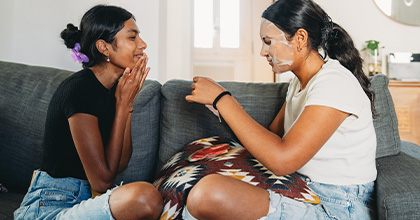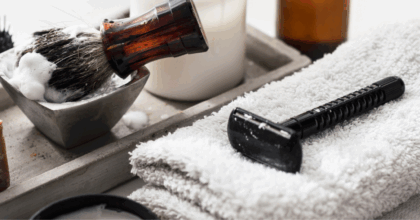The traditional concept of skin whitening has evolved toward a look that is more natural, glowing, and healthier. Brightening/illuminating are among the top five skincare claims globally with demand remaining strong in Europe and Asia Pacific.
South Korea leads with 33% of all global patent grants, followed by China (23%), Japan (13%), the US (5%), and France (4%). In 2023, Asian companies like Amorepacific Corp., LG Household and Healthcare Ltd., Coreana Cosmetics Co. Ltd., Maruzen Seiyaku (Pharmaceuticals) Co., and Kao Corp. are among the top 10 companies globally that were granted patents for skin brightening techniques and ingredients.
Skin concerns related to brightening
In China, over one-third of female consumers said they have pigmentation or hyperpigmentation issues. In India, 26% of female consumers said they associate vitamin C with glowing/brightening skin benefits while over half of UK female consumers said skincare actives are the most important element for facial skincare brands to highlight on packaging.
Skin brightening actives
Patents can focus on melanogenesis (the process by which the pigment melanin is produced in melanosomes by melanocytes) inhibition and autophagy (the process of reusing old and damaged cell parts). Tri-K Industries Inc. has a pending patent for a skincare composition that improves skin glow, radiance, and tone and clears blemishes. The composition comprises quinoa (0.0001-25%), pea peptides (0.0001-50%), and vitamin B3 (0.001-70%) as active ingredients.
Brands can use niacinamide to reduce dark spots. Mary Kay Inc.’s pending patent uses a method of reducing dark spots, age spots, and unwanted pigmentation. The method includes the use of a composition of niacinamide, phytic acid, rosemary leaf extract, seaweed (Chondrus crispus) extract, Saxifraga sarmentosa extract, papaya fruit extract, and guava fruit extract. Brands can also explore using soybean mesotheca extract to reduce hyperpigmentation,
Ingestibles
There is also a growing market interest in ingestibles. In India, over two-thirds of female consumers said supplements provide both health and beauty benefits. In Thailand, 56% of female consumers said they consume beauty supplements that provide beauty benefits. For example, they drink vitamin C for brightening.
Beauty supplement launches are growing in Europe, and there are signs of a rebound in APAC. Brands can highlight Amra extract to enhance skin’s radiance from within. A patent issued to Andong National University and Aisum Co claims the use of Cacalia firma ethanol extract in skin-whitening cosmetics and food products. Brands can also look for naturally sourced ingredients, such as caffeoyl malic acid and plum seed extract, for skin brightening.
Beauty devices
Brands can look at devices to help improve product absorption, reduce inflammation and hyperpigmentation, and increase collagen production. One popular example of a beauty device is LED light therapy, which can help reduce inflammation.
Brands can put forward devices with advanced technologies for glowing and rejuvenated complexions. A utility patent issued to That Inv S Co claims a skin-whitening-activation masking device, which claims to use multi-wavelength light, a beneficial wavelength of light that can promote blood circulation, stimulate fibroblasts and collagen and increase oxygen, and nutrition delivery. It has the effects of resisting signs of ageing, removing spots, and fading dark circles. A patent issued to inventor Goo Bon Cheol is for a skin-whitening mask with a thermoelectric module. The mask is said to effectively cool the user’s facial skin.
What we think
To enhance consumer engagement, brands can spotlight the efficacy of skin-brightening actives like niacinamide and soybean mesotheca extract. Emphasizing key ingredients and their methods of delivering brightening benefits is key for communication.
Exploring ingestibles for an “inside-out” brightening approach and incorporating beauty devices to improve product absorption are innovative avenues. Additionally, brands can introduce devices as a viable alternative to cosmetic clinic procedures, providing a middle ground between clinical treatments and traditional topical skincare.
To gain further insights into the beauty and personal care industry in the Asia Pacific region, visit the Mintel Store. Stay updated on the latest trends in patent activity to identify potential breakthroughs and growth opportunities ahead of your competition.
































